Clipart tagged: ‘nightjar’
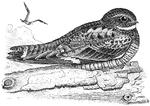
Nighthawk
Nighthawks are birds of the nightjar family in the New World subfamily Chordeilinae. They are medium-sized…
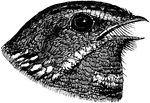
Fissirostral Bill of Nightjar
"In ornithology, having the beak broad and deeply cleft, as a swallow, swift, or goatsucker" or nightjar.…
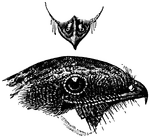
Nightjar Profile and Tubular Nostrils
Siphonorhis americana. "A genus of American Caprimulgidae or goatsuckers, having tubular nostrils. The…
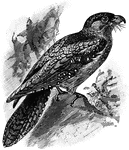
Oilbird
The Oilbird or Guacharo (Steatornis caripensis) is a bird in the Steatornithidae family, related to…
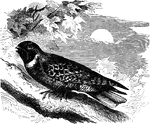
Large Whippoorwill
"Antrostomus vociferus. Whippoorwill. Night-jar. Upper parts variegated with gray, black, whitish, and…

Small Whippoorwill
"Antrostomus vociferus. Whippoorwill. Night-jar. Upper parts variegated with gray, black, whitish, and…